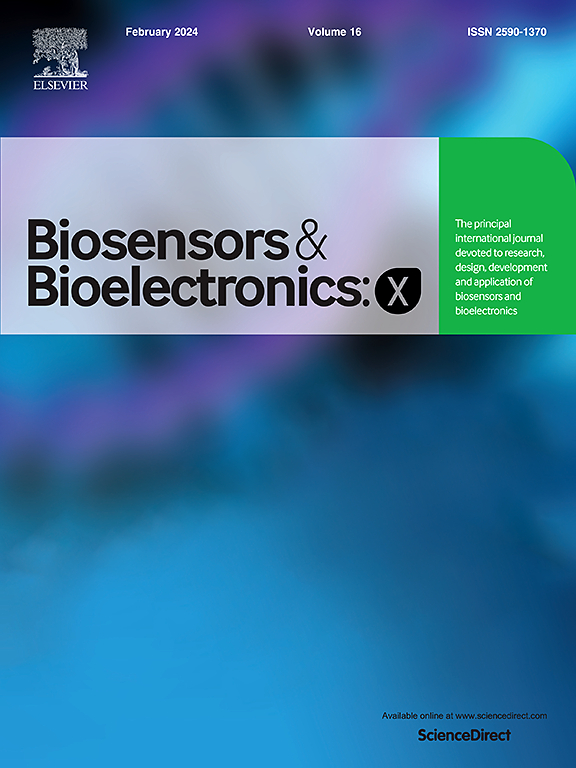Electrochemical immunosensors targeting hormonal biomarkers for polycystic ovary syndrome: Recent advances and analytical bottlenecks
IF 10.61
Q3 Biochemistry, Genetics and Molecular Biology
引用次数: 0
Abstract
Polycystic Ovary Syndrome (PCOS) is a multifactorial endocrine disorder affecting up to 13 % of women of reproductive age, with nearly 70 % remaining undiagnosed due to the limitations of conventional diagnostic methods. These traditional approaches, based on imaging, hormonal assays, and symptom evaluation, are often delayed, nonspecific, and unsuitable for large-scale screening. Recent advances in electrochemical biosensors targeting hormonal biomarkers such as Anti-Müllerian Hormone (AMH), Sex Hormone-Binding Globulin (SHBG), and Follicle-Stimulating Hormone (FSH) offer a promising alternative for rapid, sensitive, and cost-effective PCOS diagnosis. This review critically evaluates electrochemical biosensor technologies developed in last five years for the detection of PCOS, discussing material choices, electrode fabrication strategies, signal transduction techniques (EIS, DPV, CV), and their analytical performance. Key limitations in analytical design, clinical validation, and commercialization are identified, including challenges with multiplexed detection, stability in real biological matrices, and scalability. Finally, solution strategies and future research directions are proposed to bridge the gap between laboratory innovation and real-world point-of-care diagnostic tools for PCOS.

针对多囊卵巢综合征激素生物标志物的电化学免疫传感器:最新进展和分析瓶颈
多囊卵巢综合征(PCOS)是一种多因素内分泌疾病,影响多达13%的育龄妇女,由于传统诊断方法的限制,近70%的妇女未被诊断出来。这些基于影像学、激素检测和症状评估的传统方法往往是延迟的、非特异性的,不适合大规模筛查。针对激素生物标志物的电化学生物传感器的最新进展,如抗勒氏激素(AMH),性激素结合球蛋白(SHBG)和促卵泡激素(FSH),为快速,敏感和经济的多囊卵巢综合征诊断提供了一个有希望的替代方法。本文综述了近五年来用于PCOS检测的电化学生物传感器技术,讨论了材料选择、电极制造策略、信号转导技术(EIS、DPV、CV)及其分析性能。分析设计、临床验证和商业化的关键限制被确定,包括多重检测的挑战、真实生物基质的稳定性和可扩展性。最后,提出了解决方案策略和未来的研究方向,以弥合实验室创新与现实世界的PCOS即时诊断工具之间的差距。
本文章由计算机程序翻译,如有差异,请以英文原文为准。
求助全文
约1分钟内获得全文
求助全文
来源期刊

Biosensors and Bioelectronics: X
Biochemistry, Genetics and Molecular Biology-Biophysics
CiteScore
4.60
自引率
0.00%
发文量
166
审稿时长
54 days
期刊介绍:
Biosensors and Bioelectronics: X, an open-access companion journal of Biosensors and Bioelectronics, boasts a 2020 Impact Factor of 10.61 (Journal Citation Reports, Clarivate Analytics 2021). Offering authors the opportunity to share their innovative work freely and globally, Biosensors and Bioelectronics: X aims to be a timely and permanent source of information. The journal publishes original research papers, review articles, communications, editorial highlights, perspectives, opinions, and commentaries at the intersection of technological advancements and high-impact applications. Manuscripts submitted to Biosensors and Bioelectronics: X are assessed based on originality and innovation in technology development or applications, aligning with the journal's goal to cater to a broad audience interested in this dynamic field.
 求助内容:
求助内容: 应助结果提醒方式:
应助结果提醒方式:


